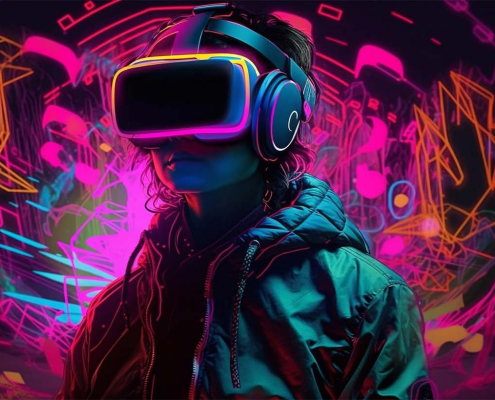Technology
NERF, Stable diffusion, CPP, Python, PyTorch
Sector
Development Service
In recent years, advancements in artificial intelligence (AI) have significantly impacted the field of computer graphics, particularly in 3D modeling and texturing. This case study explores the innovative use of AI algorithms, specifically stable diffusion, to generate high-quality textures for 3D meshes. By integrating AI into the traditional 3D mesh painting process, we aim to improve texture quality and streamline the overall texturing workflow.
1. Integrate AI algorithms, particularly stable diffusion, into the 3D mesh painting process to improve texture generation.
2. Enhance the quality and realism of 3D textures using AI-powered techniques.
3. Streamline the texturing workflow, reducing manual effort and time required for texture creation.
4. Evaluate the effectiveness of AI-powered texture generation in comparison to traditional methods.
The concept revolves around leveraging AI algorithms, specifically stable diffusion, to generate realistic textures for 3D meshes. By utilizing AI-driven diffusion algorithms, we aim to generate textures that exhibit more organic and realistic patterns, achieving a higher level of visual fidelity.
1. Data Preparation: 3D Mesh Acquisition: Obtain the 3D mesh model, which serves as the foundation for texture generation.
2. AI-Powered Texture Generation: Stable Diffusion Algorithm: Utilize stable diffusion, an AI algorithm, to propagate texture patterns.
3. Training the AI Model: Train the stable diffusion algorithm using a dataset of textures to learn and simulate natural patterns.
4. Texture Refinement: Post-Processing: Apply post-processing techniques to refine the generated texture, enhancing details and realism.
5. Integration: Texture Application: Apply the generated texture to the 3D mesh for visual assessment and further adjustments.
6. User Interaction: Provide an interface for artists or designers to interact with the AI-generated textures and make manual adjustments if needed.
Integrating AI algorithms like stable diffusion into the 3D mesh painting process represents a promising avenue for revolutionizing texture generation. This approach not only enhances the quality and realism of 3D textures but also streamlines the texturing workflow by reducing manual effort. The combination of AI-powered texture generation and human creativity holds immense potential in advancing the field of 3D modeling and texturing, paving the way for more efficient and visually stunning results.

















